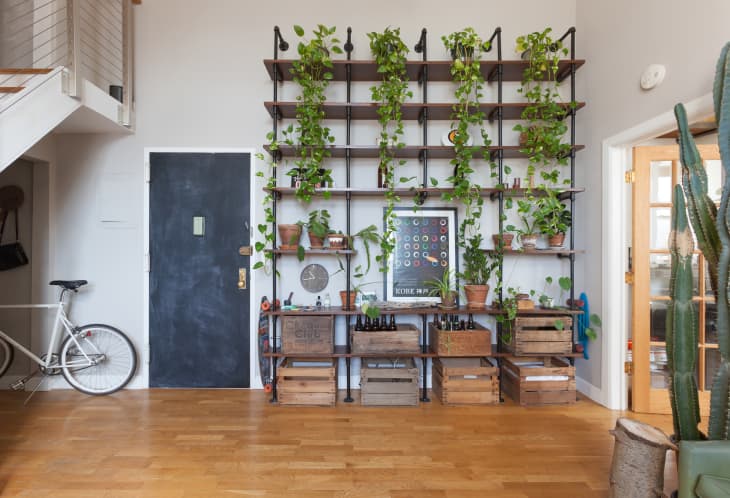
If there were ever a plant that’s perfect for people who are terrible with plants, it’s the sweetheart or heartleaf philodendron. Not only are they easy to keep healthy (seriously, they’re harder to kill than to keep alive), but they come in a variety of beautiful shades and can be kept as cheerful, bushy plants or graceful trailers. Here’s everything you need to know about caring for them.
Looking for the Split Leaf Philodendron — or Monstera Delicosa —instead?

Philodenderon Light Requirements
Philodendrons do just fine in low light conditions, one of the best aspects of their versatility. Plants that receive medium or indirect light, however, will grow faster and produce more leaves. Philodendrons should not be placed in direct sunlight.
Watering Your Philodendron
Philodendrons may be grown in soil or just in water. Plants that live in soil should be watered when half of the soil is dry. As with most plants, yellow leaves indicate over-watering and brown leaves indicate under-watering. You can tell when a philodendron needs water because its leaves will appear wilted. When watered, the plant will reward you with a perky appearance.

Philodendrons also thrive in containers with just water. Monitor the water closely because your philodendron may drink it faster than you anticipate. One thing to note is that once a plant is used to living in either soil or water, it doesn’t always do well being transferred to the other medium.

Potted Philodendrons
Potted philodendrons should be planted in well-aerated soil for easy drainage. They should be re-potted only when they become root bound, about every two to three years; smaller pots help prevent over-watering. Pots should be porous and contain a drainage hole. If you wish to use a decorative pot that doesn’t have these characteristics, simply place a philodendron in a terra cotta pot inside the decorative pot. Using pebbles in the bottom of the decorative pot will help keep the philodendron from sitting in water.

Philodendron Fertilizer
Honestly, I know from personal experience that philodendrons will survive for years without fertilization. However, they are fast-growing plants and should be fertilized monthly with a half-strength solution of houseplant food in the spring and summer and every other month in fall and winter. Alternately, fertilize every three to four months. Watch your plant because you should only offer fertilizer when it is actively producing new leaves.
Pruning Your Philodendron
Philodendrons may be enjoyed as hanging plants, trailing plants, or table plants. No matter which style you choose, pruning your philodendron regularly will help keep you plant lush and full. Leggy trails should be cut just after a node. Do this regularly to promote bushiness and encourage new growth. Make sure cuts are smooth rather than jagged, and you can use scissors, pruning shears, or your fingernails.

How to Propagate Philodendrons
One of the most fun things about philodendrons (besides the whole staying alive thing) is how easy they are to propagate. Simply cut or pinch off a branch, making sure at least a couple of nodes are present (take leaves off your cutting if you need to expose additional nodes). You can put the cutting directly into water or soil and it’ll begin to grow. I have many friends who have my philodendrons’ plant babies.
Philodendron Toxicity
The main drawback to philodendrons is their toxicity. Ingestion of any part of the plant, whether by pets or humans, can cause severe discomfort including burning and swelling of the lips, tongue, and throat; vomiting; and diarrhea. In addition, contact with the plant’s sap could cause skin irritation. As stated by the ASPCA, philodendrons are toxic to dogs, cats, and horses. Signs of poisoning caused by philodendrons include: “Oral irritation, pain and swelling of mouth, tongue and lips, excessive drooling, vomiting (not horses), difficulty swallowing.”
Hải Yến
Gió bạn với cây tự buổi nào ,
Gió về cây lại ngất ngư chao .
Gió đi cây sẽ im lìm đứng,
Như kẻ lỡ làng dạ khát khao .



